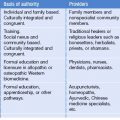CHAPTER 3 Health and Well-being of Immigrants
The Healthy Migrant Phenomenon
Introduction
A growing body of literature describes what has come to be known as the ‘healthy migrant’ phenomenon – the fact that, on a variety of measures, immigrants to the United States,1–5 Canada,6,7 Australia,8 and Western Europe9,10 are often healthier than native-born residents in their new countries of residence. Over time, however, the migrant health advantage diminishes dramatically.
Health status is the sum of a complex set of factors, with wide variability within and across groups. Nevertheless, researchers have noted some interesting trends in comparisons of the health status of US- and foreign-born residents. While immigrants to the United States do have higher rates of some infectious diseases than native-born residents, on measures of health risks, chronic conditions, and mortality they are generally better off. Singh and Siahpush3 used data from the National Longitudinal Mortality Study (1979–1989) and found that immigrant men and women had significantly lower risks of mortality than their US-born counterparts. Jasso et al.5 pooled National Health Interview Survey data between 1991 and 1996 and examined chronic conditions by year since immigration and by age of immigrants; they found that prevalence rates of chronic conditions for immigrants were much lower than those for the US-born. Similarly, Muennig and Fahs4 compared hospital utilization and mortality rates of foreign-born and US-born residents in New York City, and concluded that immigrants were healthier and had significantly longer life expectancies than natives. They estimated that the over-all cost of providing hospital-based care to the foreign-born residents in New York would be US$611 million less than care for an equivalent number of US-born persons in 1996. Dey and Lucas11 calculated adjusted odds ratios of selected chronic diseases using National Health Survey data on over 196 000 respondents from 1997 to 2002, and found that foreign-born residents had lower levels of obesity, hypertension, diabetes, cardiovascular disease, and serious psychological distress than US-born residents. Other researchers have suggested that superior health may be one of the reasons for lower healthcare expenditures by immigrants, even when they are covered by health insurance.12 Mohanty et al.12 linked 1998 medical expenditure data to 21 241 records from the 1996–1997 National Health Interview Survey and found that the per capita health expenditures of immigrants were 55% less than those of US-born individuals, even after controlling for health insurance coverage. They note that their findings debunk the commonly held myth that immigrants consume large amounts of scarce health resources.
Kandula et al.13 performed a comprehensive review of the literature published on the health of immigrants between 1996 and 2003, and summarized findings on the ten ‘Leading Health Indicators’ defined as goals for ‘Healthy People 2010.’ They reviewed literature on the health of foreign-born residents, and when data by place of birth were unavailable, they included studies of Latinos in the US. They caution that some comparisons of immigrants and the native-born yield contradictory or mixed results (for example, comparative studies of physical activity, sexual activity, injury, and violence), and on measures of levels of immunization and access to care, US-born residents do better. However, immigrants had superior health outcomes on measures of obesity, smoking, alcohol, and drug abuse, and each of these indicators worsened with increasing time in the US. Similarly, in a review of the national literature for which comparative data are available, Fennelly14 found that foreign-born residents did better than the US-born residents on 12 of the 14 goals specified by the Minnesota Department of Health to eliminate health disparities. These included infant mortality, breast and cervical cancer, sexually transmitted diseases, HIV, heart disease, diabetes, teen pregnancy, unintentional injury, suicide, homicide, motor vehicle accidents, tobacco use, and alcohol use. The exception is immunization rates of foreign-born children. Children under age 3 had lower rates of Hib and hepatitis B vaccinations than US-born children. Some comparative data were not available, notably comparative rates of HIV and AIDS (according to the HIV/AIDS Bureau of the Health Research and Services Administration of the US Department of Health and Human Services);15 and comparative data on motor vehicle accidents were not found, although it is likely that foreign-born residents have lower motor vehicle mortality rates because they are less likely to use motor vehicles. (This is the case for US Hispanics compared to non-Hispanic whites, although data are not available distinguishing US- and foreign-born Hispanics.16)
Although not all Latinos are foreign born, studies of Latino health add to our understanding of changes in health status as individuals become more acculturated to US society. Lara et al.17 conducted an extensive review of the literature and found that on some measures acculturation had a negative, a positive, or no effect on health, but that it exerted a positive effect on use of health services and selfperceptions of health. (This effect is likely to be attenuated in more recent studies because of the increase in numbers of undocumented Latinos who are ineligible for all but emergency services). The authors go on to conclude that ‘the strongest evidence points toward a negative effect of acculturation on health behaviors overall, particularly those related to substance abuse, diet and birth outcomes (low birthweight and prematurity) – among Latinos living in the United States.’ It is the focus of attention on these increasingly negative outcomes and disparities between Hispanics and non-Hispanic whites (for example) that prevents many health providers from recognizing the initial health advantage of immigrants.
One area in which immigrants may not enjoy health advantages is in the incidence of depression or other mental health conditions. Research comparing the mental health of immigrants and native-born adults leads to ambiguous conclusions. Some studies show more mental health problems among immigrants, while other suggest that they are less likely to suffer from mental health conditions. Hyman,6 for example, cites studies demonstrating that Mexican immigrants have significantly lower rates of post-traumatic stress disorder (PTSD) and depression than US-born Mexicans. This may not be the case for other groups of immigrants. A number of researchers suggest, for example, that refugees are at high risk for mental health problems as a result of ex-posure to deprivation, violence, and forced migration.18
The healthy migrant phenomenon has also been observed in Western Europe9,10,19 and Canada.6 Hyman, of Health Canada, for example, conducted an extensive review of the literature on immigration and health and concluded that ‘in Canada national health survey data show that recent immigrants, particularly from non-European countries, are in better health than their Canadian-born counterparts.’
The superior health of immigrants seems particularly counter-intuitive because of the poor health conditions in many of their countries of origin, and because of recent public attention to well-documented and significant health disparities between majority and minority populations in the United States. Two factors are operating to produce these contradictions. First, immigrants who leave their home countries tend to be healthier than those who remain at home.5 Second, after migration to the US they experience a decline in health status over time, i.e. a marked deterioration in some indicators of immigrant health after settlement, and with each successive generation (see, for example Harris,20 CAMS,21 Hernandez,22 LaVeist,23 Razum et al.9). In what Rumbaut24 calls the ‘paradox of assimilation,’ length of time in the US is positively correlated with increases in low birth weight infants,2,25 adolescent risk behaviors,20,26 cancer,27 anxiety and depression,28 and general mortality.3,4
Another reason for public misperceptions regarding immigrant health stems from disproportionate attention to serious, but low incidence and well-publicized conditions that affect immigrants, such as tuberculosis and other infectious diseases. Refugees represent a subgroup of immigrants who are at particularly high risk of tuberculosis (TB).6 Although rates for immigrants are higher than for US-born individuals, tuberculosis case rates for both groups have dropped dramatically since 1992 as a result of increases in the proportion of patients who receive and complete treatment regimens.29 The highest tuberculosis rates are found among immigrants to the US from Central and South America and the Caribbean and Western Pacific countries.29
Explanations of the Healthy Migrant Effect
As mentioned earlier, Jasso et al.5 argue that migration is selective on health, namely that individuals who migrate are a self-selected group who are much healthier than individuals in their home countries. Subsequent declines in health with time in the US can be seen as a natural ‘regression to the mean.’ The gradual changes from immigrant health advantages to disparities has been ascribed to ‘acculturation’ to an American lifestyle, raising the question of what acculturation actually means, and how it affects health. The research literature includes many different measures of acculturation, including English language proficiency, country of origin, time in the US, or scores on a variety of acculturation scales.
Noh and Kaspar30 give a broad explanation of the loss of migrant health advantage that includes widely varying implicit definitions of acculturation:
The more ‘they’ become like ‘us,’ immigrants and immigrant children fail to maintain their initial health advantages. The process is poorly understood, but may be the result of the adoption of our poor health behaviors and life styles, leaving behind resources (social networks, cultural practices, employment in their field of training, etc.), and ways in which the settlement process wears down hardiness and resilience.30
Researchers such as Hunt et al.31 call for greater measurement precision. They point out that many studies of acculturation suffer from inadequate definitions of the construct, and – what is worse – simplistic and largely untested notions of ‘traditional’ culture as negative (in the literature on Hispanic health, which is their focus, this is manifested in assumptions regarding the negative effects of machismo and traditional gender roles) or positive (as in assumptions regarding the positive effects of religiosity or strong family values on health outcomes). The authors suggest that such untested assumptions may result from acceptance of cultural stereotypes:
In reading through this body of literature one is continually struck by the juxtaposition of careful psychometric measurements, on the one hand, and such free-wheeling, meanderings about the supposed effect of unexamined cultural traits, on the other. Can the granting of such interpretive license in an otherwise rigorous genre be an indication of insidious acceptance of cultural stereotypes?31
Additional explanations of the loss of the migrant health advantage
Poverty
Such disparities are particularly pronounced among immigrants. Sixteen percent of foreign-born and 11% of US-born residents in the United States were living below the poverty line in 2002.32 The percentage of immigrants in poverty varies greatly by national origin group and educational levels, but regardless of national origin, non-citizens are much more likely than citizens to be poor, even though they are equally likely to participate in the labor force.33 Poverty levels differ for immigrants of different origins and legal statuses, and immigrants are over-represented in both high-skilled and low-skilled jobs. The largest group – Hispanic immigrants – have very high labor force participation rates, but many are relegated to low-paying jobs that offer few or no benefits. In contrast with Latinos, most Southeast Asians, Africans, Russians, and Eastern Europeans initially came to the US as refugees, or as immigrants sponsored by family members who were refugees or asylees. For these individuals the trauma of forced evacuation may make it difficult to find or maintain employment, and government bureaucratic delays in establishing eligibility for benefits may exacerbate or even cause poverty.
Stay updated, free articles. Join our Telegram channel

Full access? Get Clinical Tree







